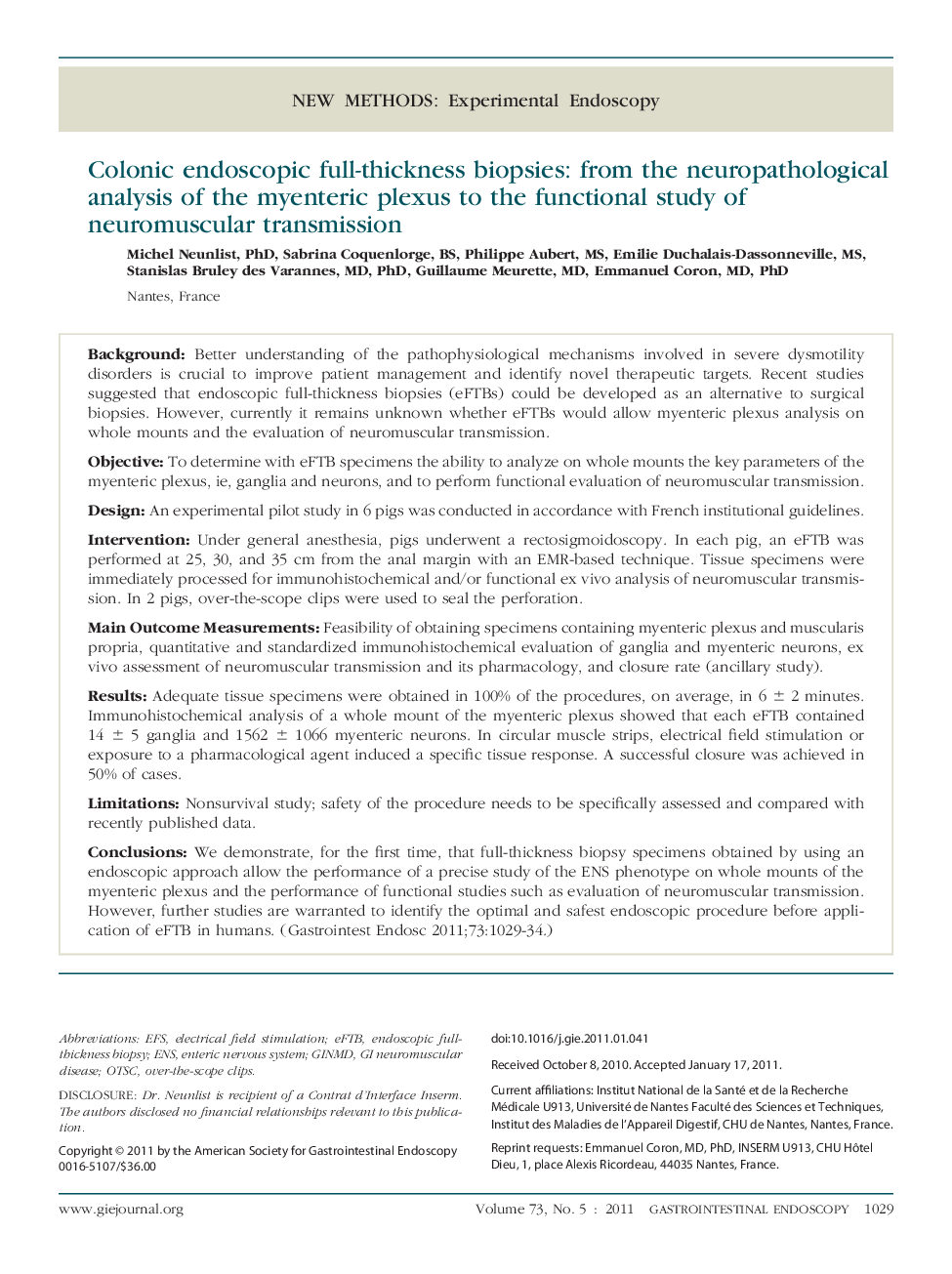| کد مقاله | کد نشریه | سال انتشار | مقاله انگلیسی | نسخه تمام متن |
|---|---|---|---|---|
| 3305312 | 1210352 | 2011 | 6 صفحه PDF | دانلود رایگان |

BackgroundBetter understanding of the pathophysiological mechanisms involved in severe dysmotility disorders is crucial to improve patient management and identify novel therapeutic targets. Recent studies suggested that endoscopic full-thickness biopsies (eFTBs) could be developed as an alternative to surgical biopsies. However, currently it remains unknown whether eFTBs would allow myenteric plexus analysis on whole mounts and the evaluation of neuromuscular transmission.ObjectiveTo determine with eFTB specimens the ability to analyze on whole mounts the key parameters of the myenteric plexus, ie, ganglia and neurons, and to perform functional evaluation of neuromuscular transmission.DesignAn experimental pilot study in 6 pigs was conducted in accordance with French institutional guidelines.InterventionUnder general anesthesia, pigs underwent a rectosigmoidoscopy. In each pig, an eFTB was performed at 25, 30, and 35 cm from the anal margin with an EMR-based technique. Tissue specimens were immediately processed for immunohistochemical and/or functional ex vivo analysis of neuromuscular transmission. In 2 pigs, over-the-scope clips were used to seal the perforation.Main Outcome MeasurementsFeasibility of obtaining specimens containing myenteric plexus and muscularis propria, quantitative and standardized immunohistochemical evaluation of ganglia and myenteric neurons, ex vivo assessment of neuromuscular transmission and its pharmacology, and closure rate (ancillary study).ResultsAdequate tissue specimens were obtained in 100% of the procedures, on average, in 6 ± 2 minutes. Immunohistochemical analysis of a whole mount of the myenteric plexus showed that each eFTB contained 14 ± 5 ganglia and 1562 ± 1066 myenteric neurons. In circular muscle strips, electrical field stimulation or exposure to a pharmacological agent induced a specific tissue response. A successful closure was achieved in 50% of cases.LimitationsNonsurvival study; safety of the procedure needs to be specifically assessed and compared with recently published data.ConclusionsWe demonstrate, for the first time, that full-thickness biopsy specimens obtained by using an endoscopic approach allow the performance of a precise study of the ENS phenotype on whole mounts of the myenteric plexus and the performance of functional studies such as evaluation of neuromuscular transmission. However, further studies are warranted to identify the optimal and safest endoscopic procedure before application of eFTB in humans.
Journal: Gastrointestinal Endoscopy - Volume 73, Issue 5, May 2011, Pages 1029–1034